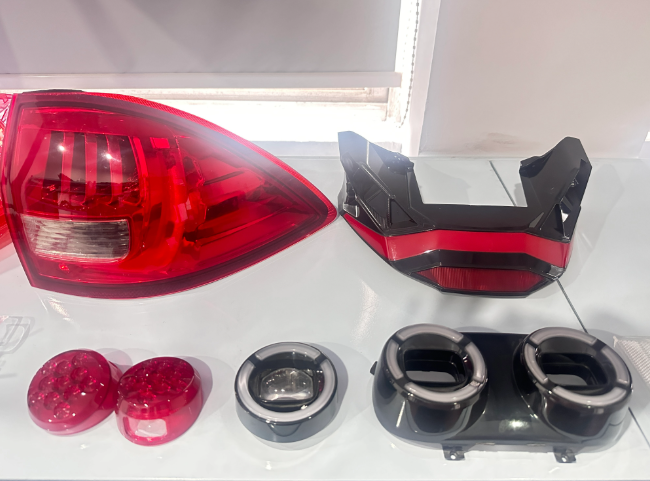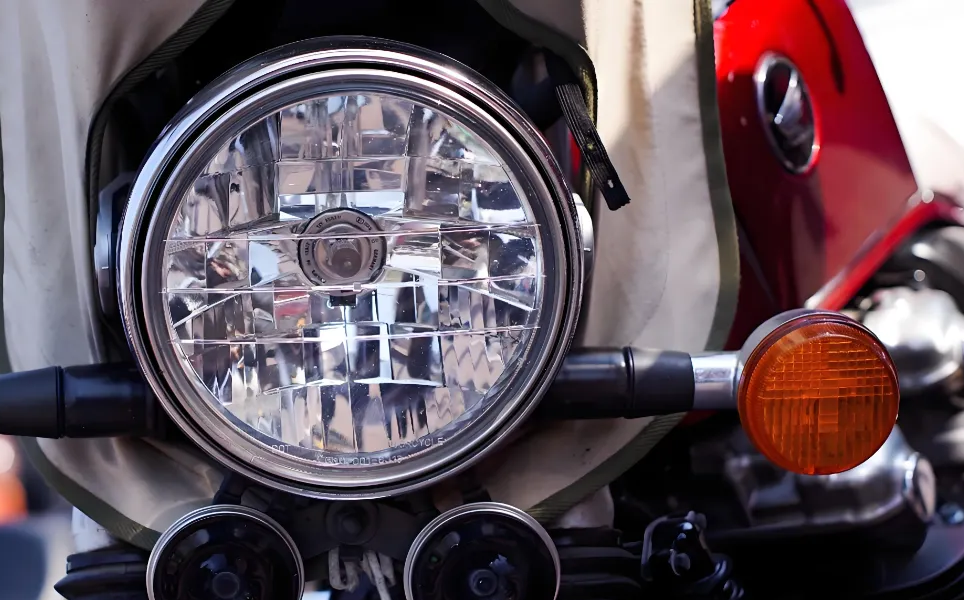Views: 0 Author: Site Editor Publish Time: 2025-04-11 Origin: Site











In the dynamic world of motorcycle manufacturing, the precision and quality of each component play a pivotal role in overall performance and safety. Injection moulding stands at the forefront of producing intricate motorcycle parts with unparalleled accuracy. It is essential to understand the various parts of the motorcycle parts injection mould to appreciate how they contribute to the efficiency and excellence of the final product. This exploration delves into the intricate components that make up a Motorcycle Parts Mould, shedding light on their functions and significance in the moulding process.

The motorcycle parts injection mould is a sophisticated tool used to shape molten plastic into specific, functional components. It consists of multiple parts that work harmoniously to produce parts that meet strict industry standards. Grasping the complexities of these moulds is crucial for manufacturers aiming to produce high-quality motorcycle parts efficiently. The integration of advanced technologies and precision engineering in designing these moulds significantly impacts the production process and the quality of the final products.
Injection moulding involves injecting molten plastic into a mould cavity, where it cools and solidifies into the desired shape. The process is highly efficient for mass production of complex parts with consistent quality. It relies on the precise construction of the mould, which must withstand high temperatures and pressures while maintaining exact dimensions. The meticulous design of each mould component ensures seamless operation and high productivity.
Motorcycles require parts that are not only durable but also lightweight and precisely engineered. Injection moulding provides a solution to manufacture such components efficiently. The use of high-quality Motorcycle Parts Mould ensures that each part meets stringent safety and performance standards. This technology enables manufacturers to produce components with complex geometries, which are essential in modern motorcycle designs.
The injection mould comprises several critical components, each serving a specific function in the moulding process. Understanding these parts is vital for optimizing mould design and ensuring the consistent production of high-quality motorcycle components.

The mould base acts as the foundation of the injection mould, providing structural support for all other components. It must be robust and precisely machined to align perfectly with the mould cavity and core. The base ensures stability during the injection process, accommodating the high pressures involved. Material selection for the mould base is critical, often utilizing hardened steel for durability and longevity.
The mould cavity and core together form the shape of the injection moulded part. The cavity is the female portion, while the core is the male counterpart. They must be engineered with extreme precision to produce parts that meet exact specifications. Any discrepancies in their dimensions can lead to defects or inconsistencies in the final product. Advanced machining techniques and quality materials are employed to create these critical components.
Efficient cooling is essential in the injection moulding process to solidify the molten plastic quickly and maintain the cycle time. The cooling system consists of channels within the mould through which coolant flows, absorbing heat from the plastic. Proper design of the cooling channels enhances production efficiency and ensures the dimensional stability of the parts. Thermal analysis is often used to optimize the cooling system layout.
Once the plastic part has solidified, it must be ejected from the mould. The ejection system includes ejector pins, blades, or plates that push the part out of the mould cavity. This system must operate smoothly to prevent damage to the part. The design considers the part geometry and material properties to determine the appropriate ejection method.
The runner system channels the molten plastic from the injection unit to the mould cavity. Gates are the entry points into the cavity. The design of runners and gates affects the flow of plastic, fill time, and quality of the part. Balancing the runner system ensures uniform filling and reduces the risk of defects like warping or air traps. Computational flow analysis helps optimize this system.
Air trapped in the mould cavity can cause defects. Venting systems allow air and gases to escape during the injection process. Proper vent design prevents short shots and burn marks on the parts. The vents must be sized correctly to allow gas to escape without letting molten plastic seep through, maintaining the integrity of the part's surface.
Maintaining consistent mould temperature is crucial for the quality of injection moulded parts. Temperature control units regulate the heat within the mould, ensuring optimal conditions for plastic flow and solidification. Advanced systems monitor and adjust temperatures in real-time, enhancing process stability and part consistency.
Designing injection moulds for motorcycle parts requires careful consideration of various factors to meet performance, safety, and aesthetic requirements. Engineers must integrate these considerations into the mould design to produce parts that align with industry expectations.
Choosing the right material for both the mould and the moulded part is essential. The mould materials must withstand the rigors of the injection process, while the plastic material must meet the mechanical and thermal properties required for the motorcycle part. Common materials include various grades of steel for the mould and engineering plastics for the parts.
Motorcycle parts often require tight tolerances to ensure proper fit and function. The mould must be designed to produce parts within these tolerances consistently. Advanced machining and measurement techniques are employed to achieve the necessary precision. Consideration of factors like shrinkage and thermal expansion is also critical.
The surface finish of motorcycle parts affects both aesthetics and performance. Mould surfaces can be treated to impart textures or smooth finishes to the parts. Techniques like polishing, texturing, or applying coatings to the mould surface are used to achieve the desired effect. These finishes must be consistent and durable to maintain quality over multiple production cycles.
The integration of advanced technologies has revolutionized mould manufacturing, enhancing precision and reducing lead times. These technologies facilitate the design and production of complex moulds required for modern motorcycle parts.
CAD software enables engineers to create detailed 3D models of the mould and the parts. This technology allows for precise design and easy modifications. Simulation tools within CAD software can predict potential issues, allowing for corrections before manufacturing begins. It streamlines the design process and enhances collaboration among engineering teams.
CAM translates the CAD designs into instructions for manufacturing equipment. It ensures that the mould is machined accurately according to the design specifications. CAM improves efficiency and reduces errors in the manufacturing process. Integration of CAD and CAM systems facilitates a seamless transition from design to production.
Additive manufacturing or 3D printing is used to create prototypes of the mould or the parts. It allows for rapid testing of designs and functionalities before investing in full-scale production. This technology accelerates the development process and reduces costs associated with design iterations.
Ensuring the quality of both the mould and the moulded parts is paramount. Rigorous testing and inspection protocols are implemented to maintain high standards and meet industry regulations.
Various inspection techniques, such as dimensional analysis and surface finish assessments, are used to verify that the mould meets design specifications. Non-destructive testing methods help detect internal defects without damaging the mould. Advanced measurement tools provide precise data to ensure quality control.
The moulded motorcycle parts undergo testing to verify their mechanical properties and suitability for use. Tests for impact resistance, tensile strength, and thermal stability confirm that the parts meet performance requirements. These tests ensure safety and reliability in real-world applications.
Proper maintenance of the injection mould extends its lifespan and ensures consistent product quality. Implementing a maintenance schedule and addressing wear and tear promptly is crucial for efficient operations.
Routine inspections and cleaning prevent the buildup of residues and identify potential issues early. Lubrication of moving parts and checking for alignment ensures smooth operation. Maintenance records help track the mould's condition over time.
Technological advancements may render some mould components obsolete. Upgrading parts like temperature control units or integrating new materials can enhance performance. Continuous improvement aligns the mould with current manufacturing standards and extends its utility.
The motorcycle parts injection mould is a complex assembly of precisely engineered components, each contributing to the efficient production of high-quality motorcycle parts. Understanding the functions and interrelations of these components is essential for manufacturers aiming to excel in the competitive motorcycle industry. By leveraging advanced technologies and adhering to rigorous standards, companies can optimize their mould designs and manufacturing processes. Investing in quality Motorcycle Parts Mould not only enhances product quality but also contributes to operational efficiency and sustainability in manufacturing practices.
1. What materials are commonly used in manufacturing motorcycle parts injection moulds?
Injection moulds are typically made from hardened steel due to its durability and ability to withstand high temperatures and pressures. In some cases, alloys or aluminum may be used for prototyping or short production runs. Material selection depends on factors like production volume, required precision, and budget considerations.
2. How does the cooling system affect the quality of the moulded motorcycle parts?
The cooling system is crucial in controlling the solidification of the molten plastic. Efficient cooling leads to uniform cooling rates across the part, reducing internal stresses and preventing defects like warping or shrinkage. Proper cooling designs enhance part quality and reduce cycle times.
3. Why is regular maintenance of injection moulds important?
Regular maintenance ensures that the mould remains in optimal condition, preventing defects in the moulded parts and prolonging the mould's lifespan. It helps in identifying wear and potential issues early, reducing downtime and maintaining consistent production quality.
4. What role does Guangdian Technology play in motorcycle parts mould manufacturing?
Guangdian Technology specializes in designing and producing high-quality injection moulds for the automotive industry and other sectors. They leverage advanced technology and engineering expertise to deliver customized solutions that meet rigorous industry standards, enhancing functionality and aesthetics of motorcycle components.
5. How do advanced technologies like CAD and CAM benefit mould manufacturing?
CAD allows for precise and flexible design of moulds, facilitating easy modifications and detailed simulations. CAM translates these designs into manufacturing instructions, ensuring accurate machining of mould components. Together, they enhance efficiency, reduce errors, and accelerate the production process.
6. What are the environmental considerations in injection moulding for motorcycle parts?
Sustainable manufacturing practices include optimizing material usage, recycling scrap materials, and using energy-efficient machinery. Companies like Guangdian Technology implement eco-friendly processes to minimize environmental impact, aligning with global sustainability standards.
7. Can injection moulding be used for low-volume production of motorcycle parts?
While injection moulding is ideal for high-volume production due to its high initial tooling costs, techniques like rapid tooling or using alternative mould materials can make it viable for low-volume production. 3D printing and other additive manufacturing methods are also considered for prototyping and small runs.
